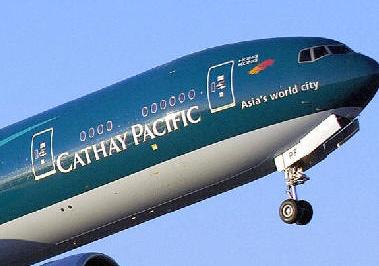
| NEWSROOM |
|
|
 |
|
|
|
|
|
|||
|
By Antonio Percy |
||||
 |
February 26, 2010
- Cathay Pacific Airways has played a key role in building
Cathay Pacific is
firmly committed to the further development of the |
|||
|
In a bid to
further strengthen its cargo operation, Cathay Pacific on February
25, 2010 signed a Framework Agreement with Air
ACC currently
operates international services from
Cathay Pacific
Group plans to fund its RMB 1,669 million investment in the joint
venture with the injection of four Cathay Pacific Boeing 747-400
Converted Freighters (BCFs) and two spare engines. The jointly owned
cargo airline is expected to become operational in the summer of
2010. (Summary in Annex)
It makes sense
for Cathay Pacific and Air China to team up for this joint venture
because the airlines’ complementary strengths in products, services,
network and expertise will enable the joint venture to offer very
competitive services to customers in northern and eastern China. The
objective is that this joint venture will grow to become the strong
home-based carrier in Pudong and |
||||
|
The YRD will
continue to grow rapidly, as will the PRD. The joint venture will help
ensure that both hubs will remain competitive relative to other export
zones elsewhere in the world. The PRD remains the largest
export-orientated manufacturing area in the Mainland - and indeed the
world - and is the primary reason why HKIA has become the world’s
largest international cargo hub.
Both the YRD and
PRD had a significant cargo throughput in 2007, taking a 38% and 30%
share respectively in terms of the international trade value between
Cathay Pacific is
not creating a brand new airline - it is buying into an existing airline
that already has seven freighters flying and will have a total of 12
freighters by the end of next year.
The joint venture
needs additional aircraft to grow and its geographical location means
that the four BCFs from Cathay Pacific are well suited to the task. The
Cathay Pacific Cargo freighter fleet will continue to grow, not
diminish, with 10 new and larger Boeing 747-8 freighters being delivered
from early 2011. This translates in to double digit capacity growth
levels in 2011 and 2012, even after the 4 aircraft have left the Cathay
Pacific fleet and joined the joint venture fleet.
At present Cathay
Pacific Cargo operates 15-16 freighter services per week between
As and when a
strong home carrier in the YRD is created, Cathay Pacific Cargo’s
ability to compete in this market will inevitably diminish. The
competitive advantage of Cathay Pacific and HKIA with respect to
capturing trans-shipment traffic to and from
Given these
competitive realities it makes strategic and commercial sense for Cathay
Pacific to join its strategic partner, Air
The aim is to
develop and grow the joint venture carrier into the pre-eminent
home-based all-cargo carrier in eastern and northern
It must be assumed
that a strong home based carrier will emerge in the
The most likely
form of co-operation would be through interline and block space
arrangements to destinations that the other party doesn’t serve. In this
sense both carriers might complement each other’s network and would be
incentivized to do so by the strategic partnership that exists between
Air
The cargo joint
venture marks another important milestone for the strategic partnership
between Cathay Pacific and Air |
| ©AvStop
Online Magazine
Contact
Us
Return To News
|
|